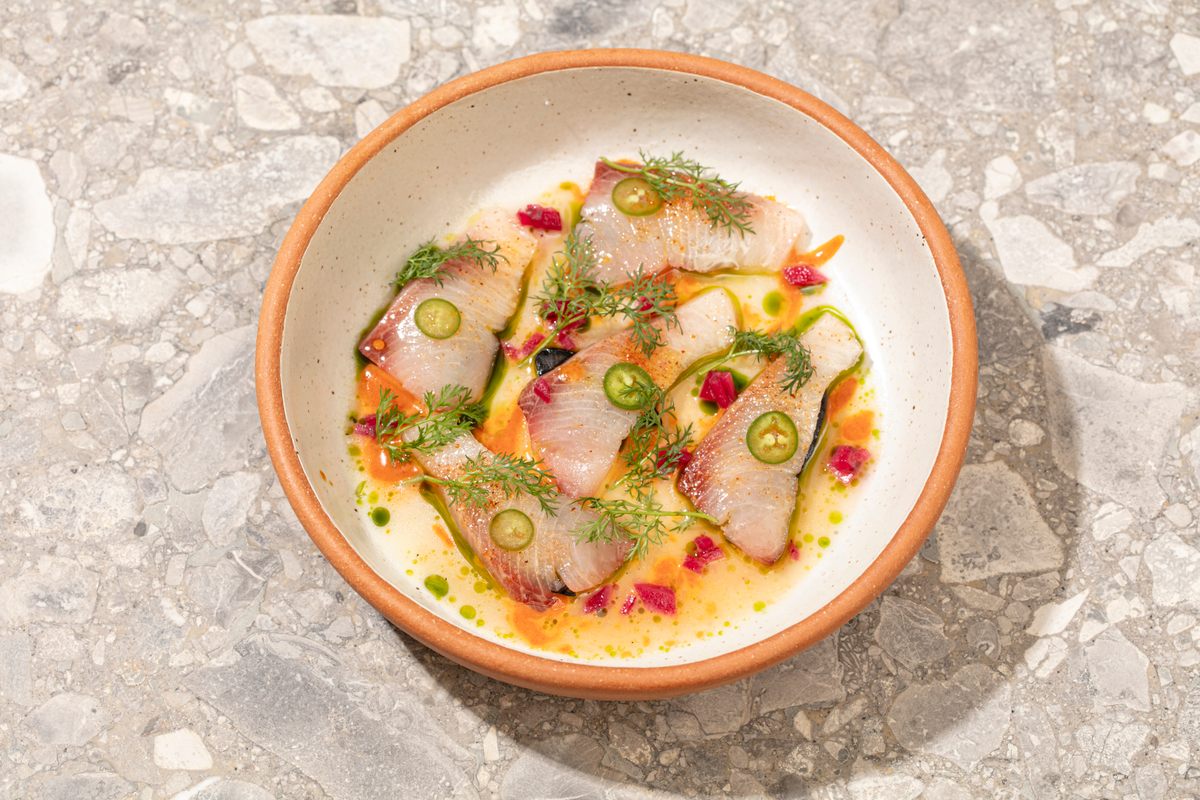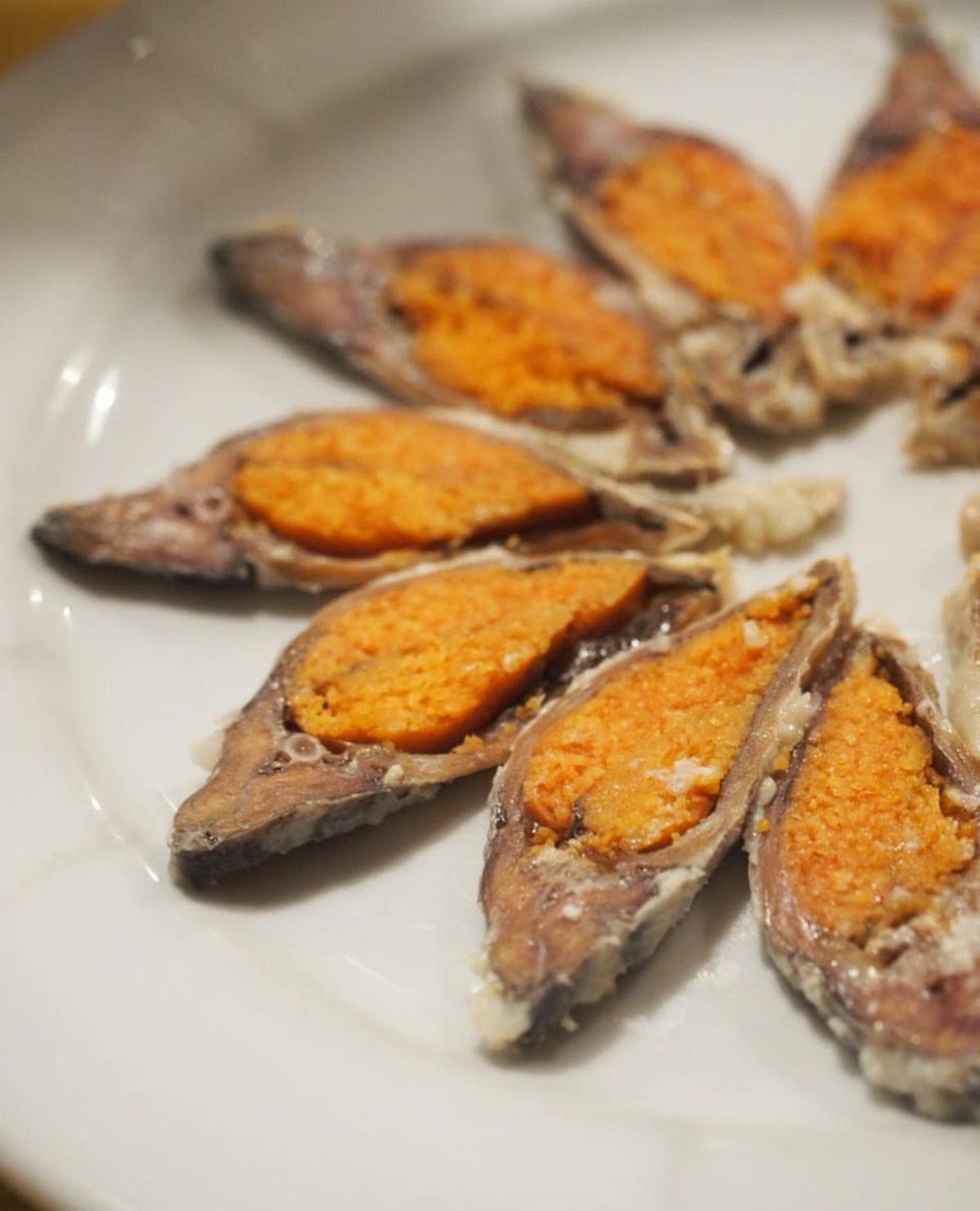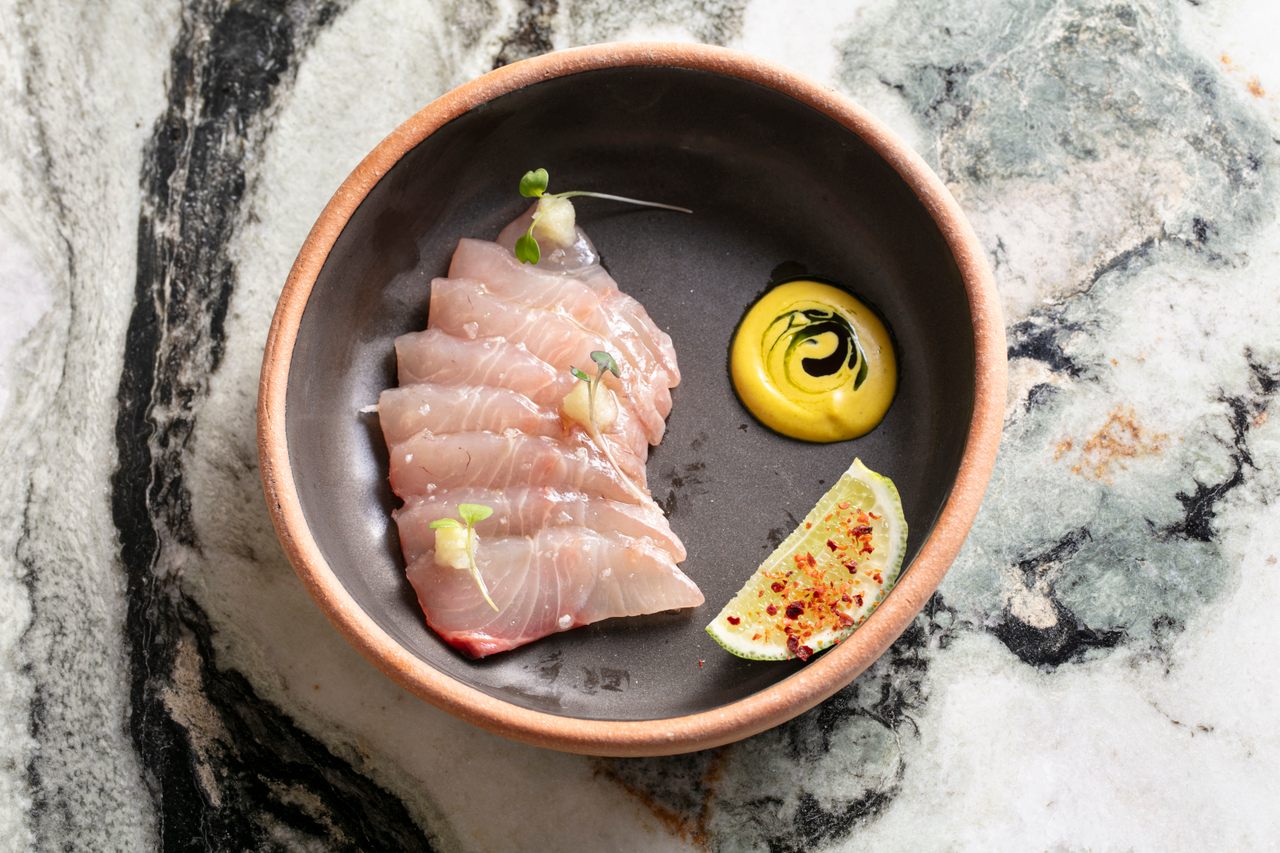Why Fresh Fish Isn’t Always Best
More restaurants are dry-aging their seafood, for concentrated flavor and enhanced texture.
THIS ARTICLE IS ADAPTED FROM THE APRIL 27, 2024, EDITION OF GASTRO OBSCURA’S FAVORITE THINGS NEWSLETTER. YOU CAN SIGN UP HERE.
Shortly before it closed and relocated to its more modern Toyosu digs, I spent the better part of a day wandering through the chaos of Tokyo’s Tsukiji Market. At the time, the world’s most famous fish market was selling around 1,700 tons of seafood a day, ranging from finger-length sardines to tuna weighing nearly 400 pounds.
This piscean bounty would ultimately be flown to restaurants around the globe. Like many people, I initially assumed that freshness was of the essence. After all, I smelled what the fish market was like at the end of the day—it wasn’t exactly what you’d call appetizing. Surely, the closer a fish was to swimming before it was plated, the better.
But that’s not entirely true.
While the speed and method by which fish is processed is incredibly important, some of the most delicious seafood in the world is old—really old. And no, I don’t mean conservas, the luxurious tinned fish found throughout Spain and Portugal.
I’m also not referring to previously frozen seafood, which accounts for most sushi or sashimi you may have eaten in the United States. In order to make sure that your nigiri is free from any pesky parasites, the FDA requires freezing most fish to -31°F in order to serve them raw.
I’m talking specifically about fresh fish that’s dry-aged like a steak—sometimes for weeks or even months. As counterintuitive as it might sound, that extra time actually makes fish taste less, well, fishy. It’s also something that chefs are taking serious advantage of.
From Sushi Ichimura in New York to Lucky Robot in Austin to The Joint Seafood in Los Angeles (whose motto is “Fresh is boring”), restaurants are going to great lengths to age their fish. I set out to learn why.

How It Works
To understand more about why anyone would do this, I called up Tomer Blechman, chef and owner of Theodora, a restaurant in Brooklyn that dry-ages much of the seafood on its menu.
“One of the benefits of dry-aging is that you’re really getting the moisture out,” he says. “Remember that the fish is coming from water.” Extracting some of that excess liquid firms up the flesh, dramatically changing the texture and concentrating the flavor. “After you dry it, the skin also becomes a little crispier.”
Dry-aging also intensifies the umami of the fish, as enzymes already in the muscles start to break down amino acids and other compounds in the flesh. As soon as a fish dies, adenosine triphosphate (ATP), an energy-carrying nucleotide, starts breaking down into an umami-boosting compound known as inosinic acid. When this process goes too far it leads to hypoxanthine, a sign that your fish is rotting. But when carefully controlled, it can have remarkable results.
How long exactly you dry-age depends on the species of fish and its fat content. As Blechman points out, a delicate, lean fish like fluke can age for only a short time. Fish further up the food chain are a whole other story.

“Usually, the fattier and the bigger the fish, the longer it can dry-age and the more benefit you’ll get from it,” he says. “With, say, salmon or hamachi, you can really notice the difference from the process.” And much like a ribeye, the massive, prized species of tuna transform completely with time.
“You can age it for 30 days or 60 days,” Blechman says. “In fact, some of the best tuna is aged for 90 days.”
Note that as effective as this process is, it’s not one to try at home. Restaurant kitchens use hyper-precise, sterile refrigerators to keep their fish at just the right temperature for weeks. Any slip-ups that allow bacteria to grow could have serious consequences, so it’s best to leave it to the pros.
Nothing New

While aged fish has been having a bit of a moment, it’s far from a new idea. True, in order to dry-age fish the way that these chefs are doing it, you need a tightly controlled, refrigerated environment—not something humans had for much of history.
Nevertheless, plenty of ingenious cooks have turned to fermenting, pickling, and other methods of aging to make their fish tastier (and safe to eat) over the last few millennia. The earliest iteration of sushi, which dates back to around the eighth century, involved rice topped with fish left to ferment for months or even years.
Known as narezushi, a version of this salt-pickled fish is still consumed with gusto today. Funazushi, a version made with carp called nigorobuna that swim in Lake Biwa, is considered a delicacy.
To the uninitiated, funazushi’s powerfully pungent aroma and intensely funky flavor can be overwhelming. The longer the fish sits layered with salt and rice, the more its flavor profile begins to resemble a stinky French cheese or even yogurt.
Like Roquefort, funazushi can be something of an acquired taste. Connoisseurs, however, will shell out big bucks for this coveted treat. Most versions age the fish for one to three years, but the oldest known funazushi was fermented for roughly a century. As the decades progress, the fish liquifies to the point where it can be spooned like a condiment.

Beyond sushi, though, fermented fish abounds around the world. Think: Norwegian rakfisk, char or trout salted and fermented for about a year; Baltic surströmming, pickled herring with an aroma that’s been likened to rotting eggs; or Egyptian fesikh, uncooked gray mullet laid out in the sun, then submerged in salt for weeks.
As with most foods, what winds up on your plate is all about the process and the quality of ingredients. And freshness isn’t exactly irrelevant. Blechman points out that in order to get the best results with dry-aging, his team tries to get their catch as close to straight off the boat as possible.
“We don’t want to start working with fish that has been sitting for three days,” he says. “We have to have a really good relationship with the fishermen.”
In other words, it’s a bit of a “hurry up and wait” situation. After a scramble to get started, great seafood is all about taking your time.
Gastro Obscura covers the world’s most wondrous food and drink.
Sign up for our regular newsletter.


















Follow us on Twitter to get the latest on the world's hidden wonders.
Like us on Facebook to get the latest on the world's hidden wonders.
Follow us on Twitter Like us on Facebook